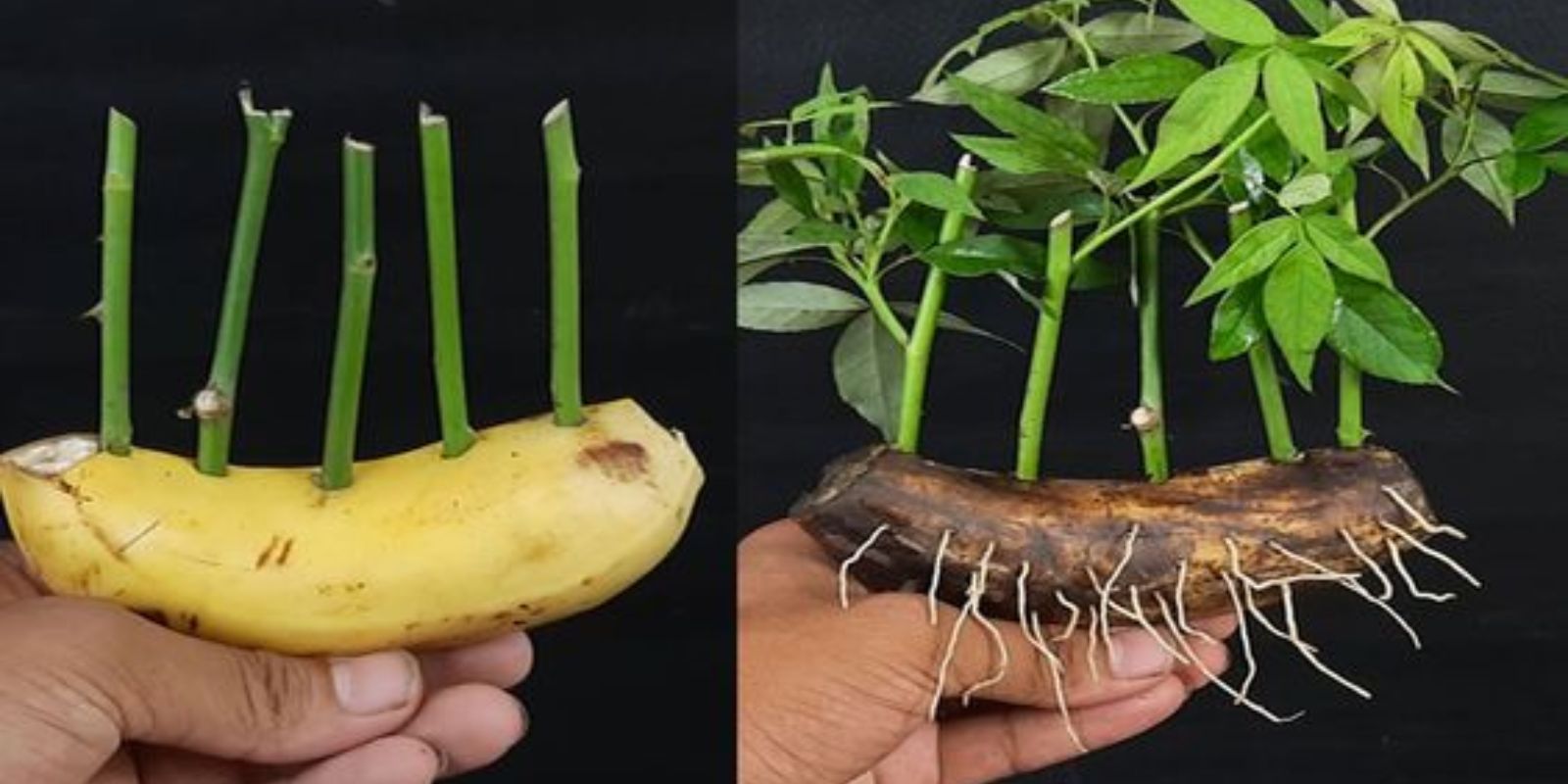Roses, with their timeless beauty and enchanting fragrance, are a gardener’s delight. However, the cost of purchasing new rose plants can quickly add up. Fortunately, there’s a simple, cost-effective method to propagate roses indefinitely using materials that are commonly available in your kitchen. This technique, known as the Banana Method, utilizes the natural nutrients in bananas to encourage root development in rose cuttings. Here’s a comprehensive guide on how to use this method to expand your rose garden without spending a dime.
Introduction to the Banana Method
The Banana Method leverages the nutritional value of bananas to boost root growth in rose cuttings. Bananas are rich in potassium, phosphorus, and calcium—all essential nutrients that support healthy root development. By combining banana pieces with rose cuttings, you can effectively create a conducive environment for the cuttings to develop roots and grow into new plants.
Step-by-Step Guide to Propagating Roses Using the Banana Method
1. Choose the Right Rose Cuttings
To begin, select healthy rose stems from your existing rose plants. Look for cuttings that are about 6-8 inches long and have at least 3-4 nodes (the small bumps on the stem where leaves and roots grow). Ensure the cuttings are disease-free and free from any signs of pest infestation. It’s best to take cuttings from new growth, as they root more readily.
2. Prepare the Cuttings
Using a clean, sharp pair of pruning shears or scissors, cut the rose stems just below a node. Remove any leaves from the lower half of the cutting, leaving just a few leaves at the top. This step reduces water loss and focuses the plant’s energy on root development. If you have rooting hormone, dip the cut ends of the stems into it. While not strictly necessary, rooting hormone can help increase the likelihood of successful rooting.
3. Prepare the Banana
Next, take a ripe banana and peel it. Bananas contain potassium, phosphorus, and calcium, which are crucial for root growth. Slice the banana into small pieces. These pieces will be mixed with the soil to provide a nutrient boost to the rose cuttings. If you don’t have a ripe banana, you can use banana peels as an alternative.
4. Prepare the Potting Mix
Choose a pot with good drainage holes and fill it with a well-draining potting mix. You can use a commercial potting mix designed for cuttings or create your own by mixing equal parts of peat moss, perlite, and sand. This mix ensures that water drains properly, reducing the risk of root rot.
5. Plant the Cuttings
Place the banana pieces at the bottom of the pot, then fill the pot with the potting mix. Insert the rose cuttings into the soil, making sure that each cutting is buried about 2-3 inches deep. Ensure that the banana pieces are in contact with the soil and the cuttings. This will help the cuttings absorb the nutrients from the bananas.
6. Water and Care
After planting the cuttings, water the soil lightly to settle it around the cuttings. Avoid soaking the soil, as excessive moisture can lead to root rot. Place the pot in a location with indirect light. Direct sunlight can be too intense for new cuttings, causing them to dry out too quickly.
Maintain a consistent level of moisture in the soil. Check the soil regularly, and water when the top inch feels dry. Be cautious not to overwater; the soil should remain moist but not soggy.
7. Monitor Root Growth
Over the next few weeks, keep an eye on your rose cuttings. With the right conditions, you should start to see signs of root growth. This can be indicated by new leaf development or resistance when gently pulling on the cuttings. Depending on the variety and environmental conditions, rooting may take several weeks to a few months.
8. Transplanting
Once the cuttings have developed a strong root system, they are ready to be transplanted. Choose larger pots or garden beds with well-draining soil. Carefully remove the rooted cuttings from the pot and transplant them into their new containers or garden spots. Continue to care for them with regular watering and appropriate sunlight.
9. Ongoing Care and Maintenance
After transplanting, provide your new rose plants with consistent care. Water them regularly, but be mindful of their needs during different seasons. During the growing season, fertilize your roses with a balanced fertilizer to promote healthy growth and flowering. In winter, reduce watering and allow the plants to enter a period of dormancy.
Conclusion
The Banana Method is an innovative and cost-effective way to propagate roses, utilizing everyday kitchen scraps to enhance your gardening efforts. By following these simple steps, you can create a flourishing rose garden at no extra cost, enjoying the beauty and fragrance of roses throughout your home and garden.
Have you tried the Banana Method for propagating roses? Share your experiences and results in the comments below, and let’s inspire each other to grow beautiful roses!

